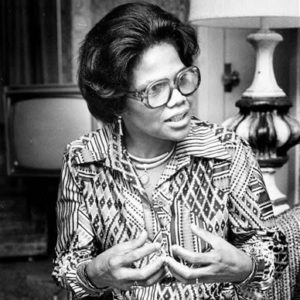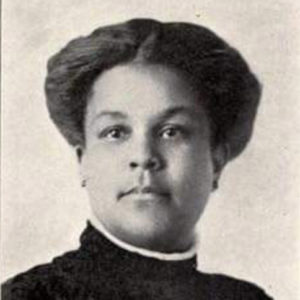calsfoundation@cals.org
Arkansas Association of Colored Women
aka: Arkansas Association of Colored Women’s and Girls Federated Clubs, Inc.
aka: Arkansas Association of Women’s Clubs, Inc.
aka: Arkansas Association of Women, Youth, and Young Adults Clubs, Inc.
The Arkansas Association of Colored Women (AACW) was organized in 1905. Affiliated with the National Association of Colored Women (NACW), which was founded in 1896, the AACW adopted the national organization’s motto, “Lifting as We Climb,” and was dedicated to improving conditions in African-American communities throughout Arkansas. Its members were middle-class, educated black women from all over Arkansas. Some AACW members also held offices in the national organization. For example, Fort Smith (Sebastian County) resident Mame Josenberger (who was a member of the Phillis Wheatley Club, one of the earliest black women’s clubs in Arkansas, founded in Fort Smith in 1898) was AACW state president from 1929 to 1931 and had served as the NACW’s auditor in the 1920s.
The AACW held its first annual convention in Hot Springs (Garland County) in 1908. Mary H. Speight, who founded the Frances E. W. Women’s Federated Club in Little Rock (Pulaski County) in 1907, was its first president. Throughout the decades, AACW members were attuned to the issues confronting African Americans in the state. At its 1930 annual meeting in Hot Springs, for example, officers and members welcomed medical personnel, who discussed hygiene and mental health concerns in black communities. In this same meeting, they also voiced their support for federal anti-lynching legislation and affirmed the NACW and the AACW’s membership in the National Association for the Advancement of Colored People (NAACP).
The AACW had connections to prominent African-American leaders. In 1937, educator and NACW member Mary McLeod Bethune attended the AACW’s annual meeting in El Dorado (Union County) as a representative of the New Deal’s National Youth Administration (NYA) program.
AACW members, in addition to “uplifting” black communities, were particularly concerned about protecting African-American women and girls. In 1938, among their concerns was the prevalence of tuberculosis among African Americans. They were also concerned with youth education and the need for an “industrial school for race girls.” Indeed, club members used their limited political power to urge Arkansas state senators to vote for appropriations to build the school. At their annual meeting in 1939, after hearing a keynote address by Pine Bluff (Jefferson County) attorney William Harold Flowers, AACW members voted to raise funds to care for a thirteen-year-old girl who had been sentenced to ten years in prison. Because Arkansas lacked the facilities to house young black women who had been convicted of crimes, they were often sent to male prison camps. The AACW instead procured the funds for the girl to be sent to the Fargo Agricultural School in Monroe County. Lillian Epps Brown, an AACW trustee and wife of Fargo founder Floyd Brown, quite likely assisted this effort. By 1949, the Fargo Agricultural School had become the Fargo Training School for Negro Girls.
Most AACW members’ activism focused on impoverished conditions in rural black Arkansas communities. The AACW’s “Rural Clubs and Extension” committee worked with local black organizations to provide important community resources. In Marked Tree (Poinsett County) in the 1940s, for example, the committee met with the Men and Women’s Civil League, the Boys and Girls Canning Club, the Parents and Teachers Association, and the Young Men’s Improvement Club to address community concerns.
During the World War II years, black club women also addressed the increasing racial violence in Arkansas. At their annual meeting in Marked Tree in 1942, AACW members supported civilian defense programs and also endorsed demands for an investigation of the 1942 murder of Sergeant Thomas P. Foster by white policemen.
Conference themes in the late 1940s and early 1950s reflected AACW members’ awareness of the changing times in which they lived. Their 1949 annual meeting in Camden (Ouachita County) addressed the theme “A Broader Vision—An Open Mind—A Wider Scope.” The 1951 meeting theme was “United for Peace.” In June 1954, particularly after the Brown v. Board of Education Supreme Court decision, AACW members addressed the changes occurring around the country and in their communities by sponsoring a mass meeting on “Race Relationships,” led by Dr. Edith Irby. This meeting also included a lecture on “Public Affairs” by Pine Bluff attorney Wiley A. Branton. Subsequent annual meetings in the 1950s addressed such issues as legislation and human relations. In the 1960s, AACW annual meeting themes such as “New Directions for Expanding Democracy” spoke directly to the changes emanating from the civil rights movement.
In the 1970s, the AACW, now called the Arkansas Association of Colored Women’s and Girls Federated Clubs, Inc., (AACWC) continued to focus on supporting black women and girls in Arkansas communities. Chief among these efforts was clubwomen’s support of educational opportunities for young black women. In 1974, for example, the organization awarded a $200 scholarship to a young woman from West Helena (Phillips County) to attend the University of Arkansas (UA) in Fayetteville (Washington County). AACWC meetings continued to be informed by the political, economic, and health concerns of black Arkansans. In 1976, at their seventy-first annual meeting in Helena (Phillips County), the theme of which was “Remembering the Past and Building for the Future,” members stressed the importance of the hard-won victories of the civil rights movement and the women’s movement. Embedded within these discussions were also concerns about learning disabilities among African-American children.
Despite a decrease in membership, the organization is still active in the twenty-first century. It assisted residents of Louisiana, Mississippi, and Texas who were displaced by Hurricanes Katrina and Rita in 2005, and it helped Dumas (Desha County) residents after a tornado in 2007.
The AACW/AACWC—renamed the Arkansas Association of Women’s Clubs, Inc., in the late 1970s, and later the Arkansas Association of Women, Youth, and Young Adults Clubs, Inc.—celebrated its 110-year anniversary in Little Rock in 2015. The organization remains committed to the motto “Lifting as We Climb.” This legacy continues to inform black club women’s activism in Arkansas.
For additional information:
“AACW in 37th Session at Marked Tree.” Arkansas State Press, June 5, 1942, pp. 1, 8.
“Activities of Women’s National Organizations.” Chicago Defender, April 6, 1940, p. 18.
“Arkansas Club Women Slate Meet.” Chicago Defender, May 28, 1949, p. 10.
“Arkansas Club Women to Care for Convicted Girl.” Atlanta Daily World, June 24, 1939, p. 1.
“Arkansas Clubs Re-Elect Officers at Annual Meet.” Pittsburgh Courier, June 30, 1934, p. 8.
“Club Women to Meet at Yerger.” Hope Star (Hope, Arkansas), June 5, 1954, p. 1.
“Girl’s Industrial School Opens to Delinquent Girls.” Arkansas State Press, July 15, 1949, p. 1.
Jones-Branch, Cherisse. “The Arkansas Association of Colored Women and Early Twentieth-Century Maternalist Activism.” Arkansas Historical Quarterly 79 (Autumn 2020): 218–230.
———. Better Living by Their Own Bootstraps: Black Women’s Activism in Rural Arkansas, 1914–1965. Fayetteville: University of Arkansas Press, 2021.
“National Association of Colored Women, Inc.” National Notes, October 1, 1929, Volume 32, Issues 1, 2.
“National Association of Women Hold Biennial Meet.” Chicago Defender, July 26, 1930, p. 6.
“The Negro Community.” Hope Star (Hope, Arkansas), June 8, 1962, p. 4.
“No Time for ‘Sit-Down’ Convention Delegates Told.” Courier News (Blytheville, Arkansas), June 18, 1976, p. 8.
“Scholarship Given.” Courier News (Blytheville, Arkansas), July 23, 1974, p. 26.
Cherisse Jones-Branch
Arkansas State University
 Civil Rights and Social Change
Civil Rights and Social Change Philanthropy
Philanthropy Edith Irby Jones
Edith Irby Jones  Mame Stewart Josenberger
Mame Stewart Josenberger 




Comments
No comments on this entry yet.